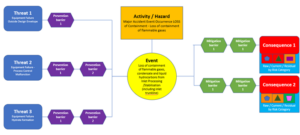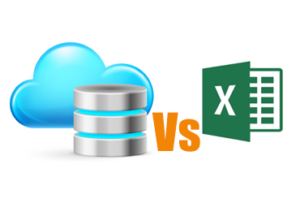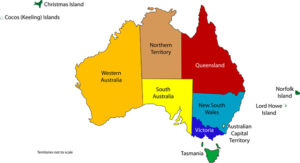As an organisation increases in size and complexity, it requires a higher level of management. The business structure begins to take shape as these different levels of management are integrated. Certain decisions about the business’s architecture emerge from this process. It usually boils down to whether a company will be centralized or decentralized in its management structure. So, what do these terms mean?
As a business structure, the chain of command defines how all business-related decisions are made. A completely centralized business is like a pyramid with layers of accountability. All decisions will be made by the people at the top of the pyramid- the top management makes a decision, which is filtered down through the layers of management to the ground level.
The structure of a decentralized organization consists of separate, autonomous units that are linked together to form a whole. It has a much less hierarchical structure, and instead of central management, team or unit leaders make many of the decisions.
Both approaches to business have their benefits. No matter what business structure a company chooses, making an informed decision while weighing the pros and cons of each is critical.

THE BENEFITS OF DECENTRALIZATION
Businesses that undergo dramatic changes often use a decentralized structure. There may be various reasons for this, including the company’s growth strategy, or the industry in which the company operates rapidly changing. Decentralization allows for fast reactions to such changes, and quicker decision making within companies.
It also takes the pressure off central management teams (which can otherwise become a bottleneck for decision making) and allows businesses to freely explore opportunities as they see fit. Creating a small, independent team to try something fresh with autonomy is much less of a drain on company resources than integrating a brand-new project into a centralized hierarchy where every decision must be sent up and then back down the chain of command.
On the ground, decentralization is also helpful in making employees more directly accountable. By delegating decision making power to lower down the command chain, it allows teams to develop stronger bonds and to be more effective as a single unit.
Louis A. Allen- “Decentralisation stimulates the formation of small cohesive groups. Since local managers are given a large degree of authority and local autonomy, they tend to weld their people into closely-knit integrated groups.”
COMMON DECENTRALIZATION PROBLEMS
Individual teams are more likely to be effective with decentralization, but overall business performance can dip. This is due to a lack of coordination between departments and units and a risk that focus is on the individual team success disregarding the broader business strategy and objectives. Decentralization creates a chasm of disconnection between departments in businesses where different departments need access to the same information or resources.
Trying to gain a holistic understanding of business operations can also be a problem. In an environment where individual departments select their own reporting model, the metrics that one unit is reporting on may differ from those of another. This makes it difficult for the upper management teams to understand which direction the company as a whole is trending in. Today, critical analysis of ESG goals and the effectiveness of systems in place is essential, but decentralization makes it difficult.
Another problem with decentralization is inconsistent internal messaging and policies. Although outstanding leaders can boost the effectiveness of their teams owing to their independence, the opposite is true as well. All businesses are susceptible to poor management. When your organization is decentralized, however, poor management is more likely to negatively impact your business, creating an inconsistent experience for employees and customers.
HAVE YOUR CAKE AND EAT IT TOO
Many companies are realizing the benefits of decentralization, yet they opt for more traditional, centralized structures, abandoning the potential benefits of decentralization. But modern technology has given many companies a third option, which sits somewhere between the two.

Integrating centralized management software into a decentralized structure allows much more transparency and consistency within the decentralized organization, without removing overall autonomy from your teams. This allows upper management to keep their finger on the pulse, keeping the necessities consistent while sidestepping many of the decentralization issues. You can receive the benefits associated with decentralization (agility when it comes to changes, a reduced burden on upper management and decision-making bottlenecks, and happier employees) while minimizing the drawbacks (inconsistent reporting metrics and internal policies, overall business performance dipping).
Many companies don’t realize that they can have their cake and eat it too. And that’s all thanks to some brilliant management software that’s available to businesses today.
WHY CHOOSE TOTUM
There are so many options available for management within companies. Many options are off the shelf, and only useful for a very specific use case. One of the things that makes Totum different is that it is designed to be modular and adapt to your company’s processes and day-to-day functions. We put the fundamentals of maintaining your licence to operate at the heart of your business operations, ensuring the critical things are identified, managed and reported consistently across the business, whether that is a centralised structure or a global network. Our onboarding process starts with a discussion of exactly what you need our software to achieve, and we help with the implementation from start to finish.
For a free consultation and demo of the Totum software, get in touch with us today.







